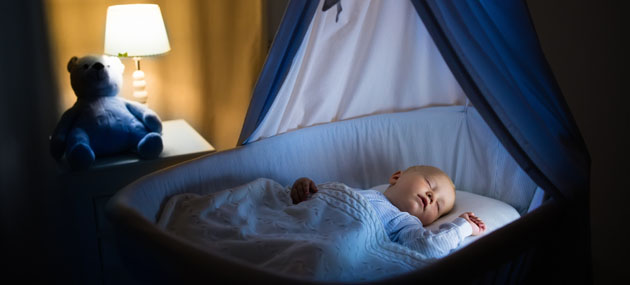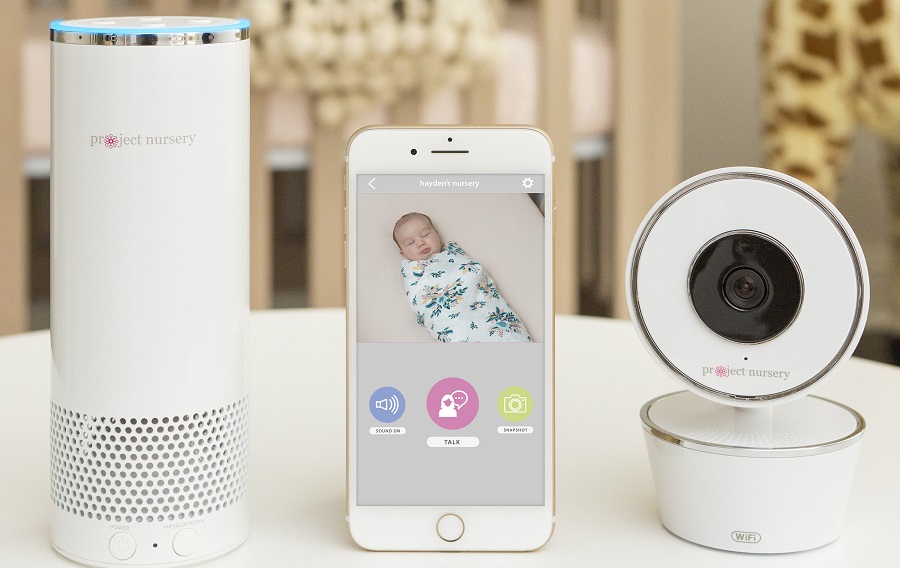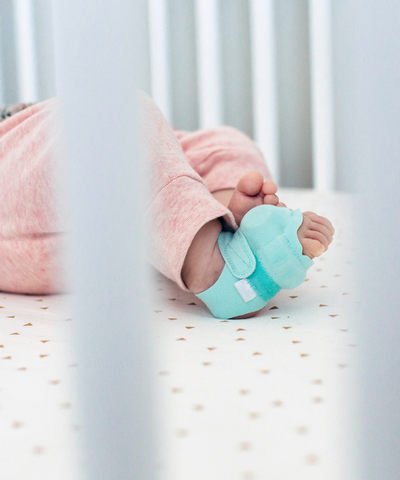 A few years ago when my daughter was born, my wife and I had a look at a lot of baby monitors. There are literally dozens of baby monitors out there, but what’s the best one for your home? The first baby monitor I remember seeing was a full on wireless audio monitor with sound bars to help you listen in on how much noise the baby was making (both asleep and awake.) I swear every early 90s parent had that Fisher Price baby monitor with the rubber ends and walkie-talkie shaped receiver since it’s all I ever saw at anybody’s home that had young kids.
A few years ago when my daughter was born, my wife and I had a look at a lot of baby monitors. There are literally dozens of baby monitors out there, but what’s the best one for your home? The first baby monitor I remember seeing was a full on wireless audio monitor with sound bars to help you listen in on how much noise the baby was making (both asleep and awake.) I swear every early 90s parent had that Fisher Price baby monitor with the rubber ends and walkie-talkie shaped receiver since it’s all I ever saw at anybody’s home that had young kids.
Fast forward to 20+ years later. Ultimately, my wife and I picked a video + audio monitor, which turned out to be a good idea for us. My daughter was a fairly noisy sleeper and I couldn’t really tell whether she was awake or asleep at times without the use of visual aids. Your search for baby monitors might have some of the same questions we did, so here’s a look at some different types of baby monitors to help you pinpoint the right one for your home.

Audio Baby Monitors
With the exception of your own ears, audio-only options are probably the oldest form of baby monitor out there. Audio monitors are a pretty simple operation. You take the pickup base and place it in your nursery or where your baby sleeps. From there, you take your receiver where you’re going, and as long as you’re in range of the base, you’ll hear anything and everything that goes on in the room.
Nowadays, these type of baby monitors also come with a few additional features. Most of them have two-way audio (where you can communicate with your little one through the receiver if you need to) and may also have other options built in. The last time I looked at audio baby monitors, I mentioned the VTech Digital Audio Baby Monitor with DECT 6.0 Technology because it had two-way communication and a sleep/lullaby feature. It’s still a great option if you want something that’s audio-only.

Audio and Video Baby Monitors
I’d say that Audio and Video Monitors are the most common type out there now. I’d say that the majority of baby monitors out there right now have some form of audio/video receiver screen with them. This was the type of monitor my wife and I had, and I found it invaluable since, as I had mentioned above, my daughter was a pretty noisy sleeper in early days and I had trouble figuring out whether she was awake or asleep, especially during sleep cycle transitions.
When you choose a video camera monitor, think about where you’re setting the video screen up in relation to the crib or bed. With that in mind, consider your camera’s zooming, panning and tilting options, along with how far they can zoom in. While just about all cameras have night vision options, the strength varies, and you might need to zoom in at times just to see if your child is rolling around asleep or awake depending on the angle you’re set up at. Whether your camera projects in colour or black and white is really just a preference, and I don’t feel as though it really makes a difference in the grand scheme of things.
If you want a camera with a really flexible range, the VTech 5″ Video Baby Monitor with Zoom/Pan/Tilt features a 170 degree tilting range while providing a 2x zoom. Depending on the size of your room and where you’ve set your monitor up, a 2x should be sufficient. If your child has a large room, or you’ve positioned the camera fair distance away, you should think about a camera with a larger zoom range.
You could also consider a multi-camera setup, or one with a fixed camera and one that can be moved easily. The Motorola 5″ Video Baby Monitor with Zoom/Pan/Tilt comes with two different cameras that you can set up, and can be expanded to 2 more within the home. The really nice thing is that one camera can remain in your nursery at all times, while another runs on batteries and can be placed anywhere in the home you need it, especially if your baby falls asleep somewhere outside their room they don’t normally.
Wi-Fi Camera Baby Monitors with Receivers
Wi-Fi Baby Monitors with receivers give you really flexible access to the camera feed in your baby’s room. In addition to coming with a local receiver like the one you’d receive with any audio/video baby monitor, you’ll also be able to gain additional access through the camera’s app through your smartphone or tablet. Motorola have done a really good job of introducing this multipurpose monitor style to parents, with access available through their Hubble App. Take the Motorola 5″ Wi-Fi Baby Monitor with Zoom/Pan/Tilt, for instance. Not only do you have a receiver included out of the box, but you can use your phone at any point to access if, for example, the batteries to the receiver die (something that used to happen to me in our baby monitor once a week.) The monitor comes with a slough of other options too, like room temperature monitors, two-way communication and 1000 foot range. You can even add other cameras to your home network if you need to if you want to put cameras in a playroom or another room your little one sleeps in.

Wi-Fi Camera Baby Monitors without Receivers
Wi-Fi Baby Monitors without receivers aren’t common, but there are a handful of them out there. These are the types of monitors that that have just a camera in the box and nothing else. Instead of a receiver, you’ll be using your own smartphone or tablet to pick up video and audio signals. This is really convenient for parents that don’t want to carry another piece of technology around the house (since you’ve probably got your phone with you most of the day.) There’s almost no difference between these cameras and any other cameras. The Project Nursery Wi-Fi Baby Monitor with Zoom/Pan/Tilt is a good example of this. This monitor comes out of the box ready to roll with night vision features and the ability to zoom, pan and tilt. What sets this one apart from single receiver monitors though is that if you need to access the video feed from more than one device (for example, if your phone dies and you need to access off your tablet,) you just set an access password on the camera’s app and you’ll be set. If you’d like to take it to the next level, Project Nursery has a version of their Wi-Fi cam with Alexa capabilities too!
Movement-based Baby Monitors
Some of the neater concepts that have become more common in the years since my daughter grew out of baby monitor-age are technology-based solutions that go on the baby or in the crib itself. These movement monitors typically sit on the baby’s clothing or go underneath crib bedding to capture if your child is still breathing, or if they are having trouble doing so. Since the dawn of safe sleep-like campaigns in the early 90s, the risk of SIDS has been cut down significantly. Still, you may have an active baby that starts rolling around in their sleep or getting tangled in things earlier than you’d expect. There are a couple of ideas here that might help. These solutions are really only effective for the first few months of your baby’s life. By the time they’re comfortably in that 6-9 month range, you probably won’t need these anymore.
 Take the Owlet Smart Sock 2 Baby Monitor, for example. This little monitor fits with a tiny sock around your newborn’s foot. Using a low energy bluetooth connection, it helps monitor your baby’s oxygen levels and heartrate. If there is anything unusual, it alerts a parent or caregiver right away. Owlet comes with an 18 hour battery life, meaning that it can usually last a full day at a time for a newborn’s sleep schedule, and since it is really non-intrusive, your baby shouldn’t notice it at all while its on their foot.
Take the Owlet Smart Sock 2 Baby Monitor, for example. This little monitor fits with a tiny sock around your newborn’s foot. Using a low energy bluetooth connection, it helps monitor your baby’s oxygen levels and heartrate. If there is anything unusual, it alerts a parent or caregiver right away. Owlet comes with an 18 hour battery life, meaning that it can usually last a full day at a time for a newborn’s sleep schedule, and since it is really non-intrusive, your baby shouldn’t notice it at all while its on their foot.
One of those in-crib solutions I was referring to is the Angelcare Audio & Movement Baby Monitor with Two-way Communication. This type of monitor is similar to the earliest movement-based examples and slips under your child’s mattress pad. Should the monitor not detect any motion within 20 seconds, it will alert the parents right away. The unit also comes with a temperature sensor for your nursery as well which tells you visually whether the nursery is too hot or cold. In case you need it, this Angelcare monitor also comes with two-way communication if you want to speak with your baby. There is a much more comprehensive version available as well with a built-in room thermometer on the base and a video screen. This one is the Angelcare 4.3″ Baby Breathing & Video Baby Monitor with Zoom/Pan & 2-Way Communication
Hopefully you’ve come away with a few more answers to your questions. If you’re a parent, what type of baby monitor did you end up choosing in your home? Tell us in the comments below.



